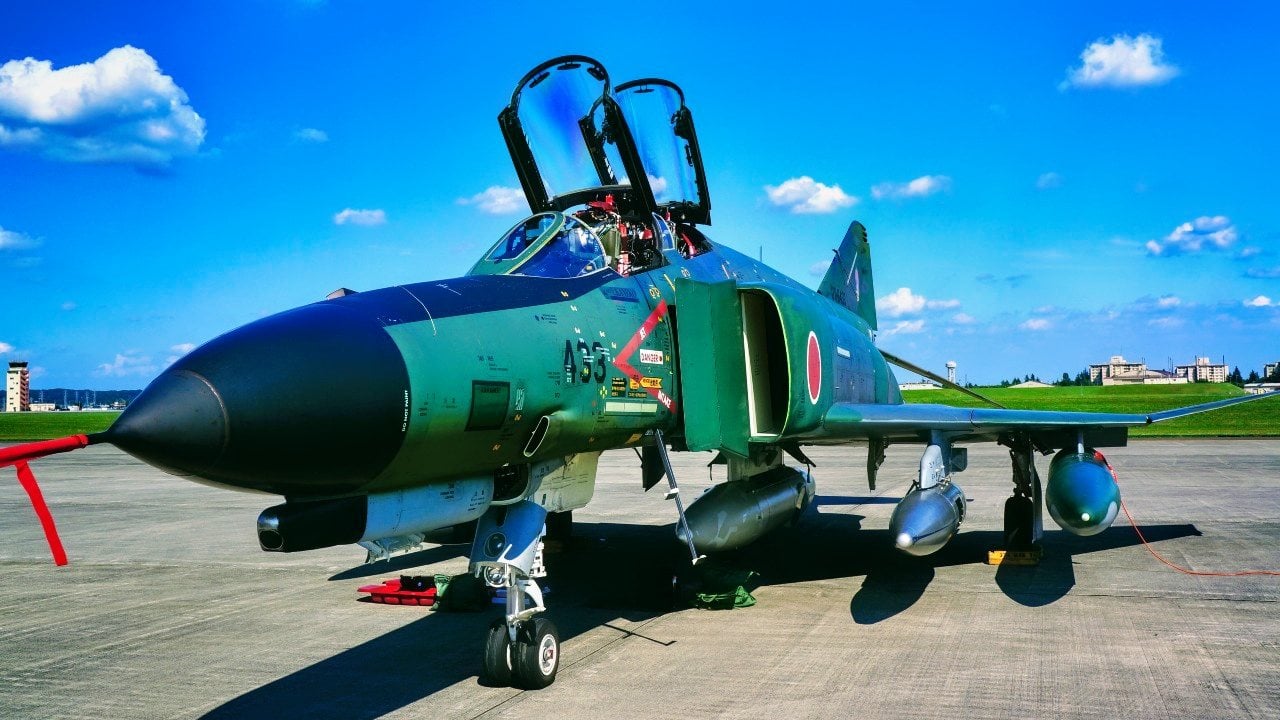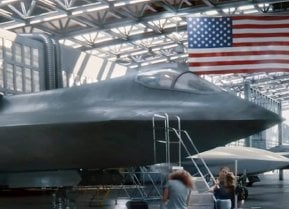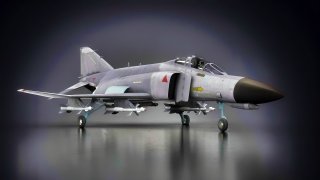The F-4 Phantom Is a Legendary Fighter for Countless Reasons
The F-4 Phantom II, an iconic third-generation American warplane, served from 1961 to 1996 and participated in conflicts like the Vietnam War and Desert Storm. Developed by McDonnell Aircraft, this tandem, two-seat, twin-engine jet was used by the U.S. Navy, Marine Corps, Air Force, and eleven other nations, including Iran.
Summary and Key Points: The F-4 Phantom II, an iconic third-generation American warplane, served from 1961 to 1996 and participated in conflicts like the Vietnam War and Desert Storm. Developed by McDonnell Aircraft, this tandem, two-seat, twin-engine jet was used by the U.S. Navy, Marine Corps, Air Force, and eleven other nations, including Iran.

-Powered by two General Electric engines, it could reach speeds of 1,485 mph and carry a variety of missiles and a Gatling cannon.
-Despite its impressive capabilities and service record, it was retired as newer fourth and fifth-generation aircraft, like the F-15 Eagle and F-16 Fighting Falcon, became operational.
The F-4 Phantom II Had the Perfect Lifespan
The F-4 Phantom II is one of America’s most iconic warplanes. After entering service in 1961 and retiring in 1996, this bird is the stuff of legends. A unique design, the F-4 Phantom II was the world’s premier third-generation warplane. It served in multiple conflicts, from the Vietnam War to Desert Storm. Even with its incredible service record, though, the warbird was retired at the appropriate time.
The F-4 Phantom II was one of the best, but by that time, the plane was a third-generation bird living in a fourth-generation warplane world. In fact, by the time the last U.S. Phantom was retired, the fifth generation had already arrived.
The F-4 In All Its Glory
A tandem, two-seat, twin-engine, all-weather, long-range supersonic jet interceptor and fighter-bomber, this warbird was originally developed by McDonnell Aircraft for the U.S. Navy. After it entered service with the Navy, the Marine Corps also adopted this plane, and so did the Air Force. Eleven other nations used these birds as well.
As an interesting aside, the Islamic Republic of Iran’s military still uses the F-4s they inherited from the government of the deposed Shāh.
The F-4 Phantom II has a maximum range of 1,450 miles (2,334 km) and an operational ceiling of 56,100 feet (17,099 meters). It is powered by two General Electric J79-GE-17 afterburning turbojet engines, each producing 17,900 pounds of thrust. The maximum speed of the F-4 Phantom II was 1,485 miles per hour at 48,000 feet.
This bird was not to be toyed with. She carried with her into battle a 20 mm M61 Vulcan Gatling cannon with 640 rounds. In other words, she could do some damage as a close air support (CAS) bird. The Phantom also carried a variety of air-to-air and air-to-ground missiles, including the AIM-7 Sparrow, AIM-9 Sidewinder, AGM-65 Maverick, and AGM-45 Shrike. F-4 Phantom IIs could carry nuclear weapons as well.
These birds came equipped with an impressive countermeasures suite including chaff and flare dispensers. What’s more, the F-4 Phantom II was equipped with an AN/APQ-72 radar, an AN/APG-59 pulse-Doppler radar, and an AN/APR-25 radar warning receiver. All these tools came in handy when needing to repel fire either from enemy warplanes or from the ground.
F-4 Fighter Phantom: Its Time Had Come
With the arrival of fourth-generation successors such as the F-15 Eagle and F-16 Fighting Falcon, the F-4 Phantom II had served her purpose.
Understandably, the men who flew her and who have studied her engineering love this plane. They should. But it simply could not compete with the next-generation birds. Even in the CAS mission set, the A-10 Thunderbolt II was a superior plane.
The F-4 had its time. It broke multiple records. The F-4 had an astonishing initial climb rate of over 41,000 feet per minute. The F-4 set a transcontinental speed record as well as achieving the world sea level speed record.
There is much to be proud of when remembering the F-4 Phantom II. But by 1996, its time had come. It needed to be retired with its legacy of heroic and legendary service. Just as all men should know when to leave the party, the same is true for planes.

Author Experience and Expertise: Brandon J. Weichert
Brandon J. Weichert, a National Interest national security analyst, is a former Congressional staffer and geopolitical analyst who is a contributor at The Washington Times, the Asia Times, and The-Pipeline. He is the author of Winning Space: How America Remains a Superpower, Biohacked: China’s Race to Control Life, and The Shadow War: Iran’s Quest for Supremacy. His next book, A Disaster of Our Own Making: How the West Lost Ukraine, is due October 22 from Encounter Books. Weichert can be followed via Twitter @WeTheBrandon.
All images are Creative Commons or Shutterstock. Main image is from a fire aboard USS John F. Kennedy in 1968.
From the Vault
Russia Freaked Out: Why the U.S. Navy 'Unretired' the Iowa-Class Battleships
Battleship vs. Battlecruiser: Iowa-Class vs. Russia's Kirov-Class (Who Wins?)


